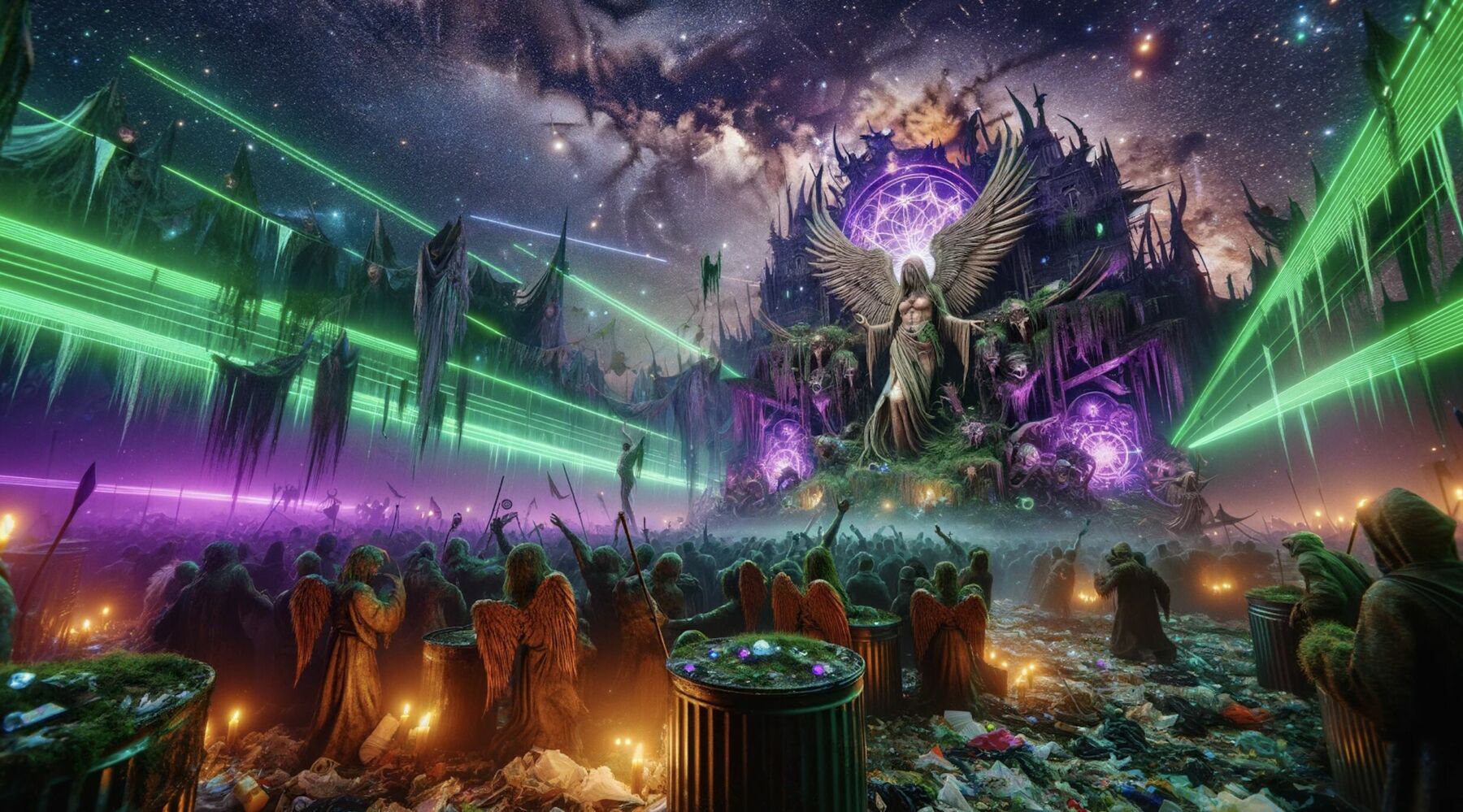Interview by Ania Morkryzka
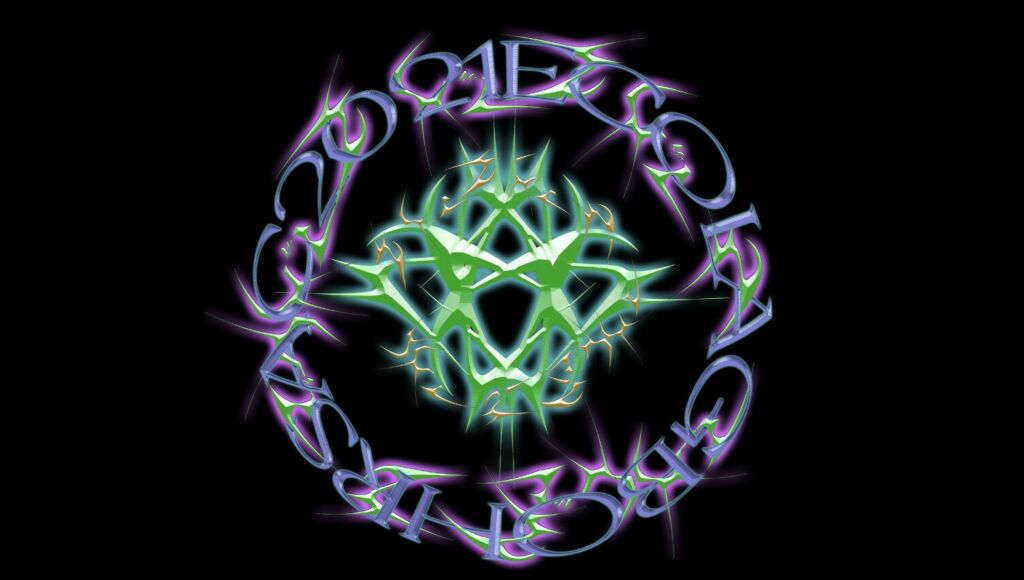
The vertiginous universe of multidisciplinary artist and curator Atay Ilgun seems ever-expanding in ways impossible to enclose within linear timelines. Elements, meanings, objects, fantasies, locations and characters shimmer into being and extinguish like virtual meteoroids traversing the dark sky over the city of London, where the artist is based.
While focusing heavily on the virtual and cyber, his multimedia project ENGLAND’S COUNCIL OF LEGISLATION AND GOVERNING BODY OF HYPER REAL SIMULATIONS AND CONSTRUCTS [a.k.a ecolagbohrac2021] seeks to counteract the numbing techno-capitalist death-drive with what the artist calls the ‘euphoria-drive’, reconciling the technological with the emotional and the poetic.
[ecolagbohrac2021]’s debut full-length album, THE ONLY WAY WE KNOW TO HAVE FUN, came out in 2021 and received highly positive reviews. It brought together tracks from various EPs and singles, presented as the fragments of a love story unfolding in multiple layers of time and space.
The work explored a broad range of themes, from the occult of mass media mind control to the world economic order and power structures. Conceptually, Labyrinthine reflects its musical background. Ruptured and chaotic, the record evades coherence, instead offering a frenetic, relentless ride through contrasting genres, melodies, and samples.
Since the aforementioned album, [ecolagbohrac2021] has produced several more, leading up to the most recent and his most ambitious to date, titled EUPHORIA. Released in 2023, the work has taken the form of live AV shows, digital and physical instruments, deep-web experiences, writings and physical locations, including a meme-orial bench in Crystal Palace Park.
Rather than an outcome of a carefully crafted curatorial plan, these elements evolved from, and in dialogue with one another in a process, the artist likens to a chance star alignment. Together, they create a complex constellation cutting through overlapping realities and inviting the receiver to take a more active role beyond immersion into the project’s sonic landscape.
Interested in new methods of world-ing, [ecolagbohrac2021] sees this project as a playground to explore and navigate the fantasyland of techno-capitalism. Employing various technologies, including extensive use of AI-generated material and blending seemingly disparate elements and approaches, he destabilises boundaries between reality and simulation, organic and synthetic, past and present, myth and truth, and physical and virtual. Humour and irony permeate the work, emphasising its playful potential to affect our perceptions of presented realities.
Using an AI model based on Nick Drake’s voice, EUPHORIA’s final track vocalises the following words: ‘by a sacred place capable of representing / to garden with you was to place oneself’. Inducing a state of liminal, quiet euphoria, perhaps this composition best encompasses the album’s latent efforts of a cathartic journey. As if wandering through the Minotaur’s labyrinth of our present day, [ecolagbohrac2021] follows not one but a multiplicity of threads, conjuring a three-dimensional, multi-sensory rendering of ‘fertile ruin,’ a sanctuary where possibilities still abound and “the whisper of leaves rustling” offers true respite.


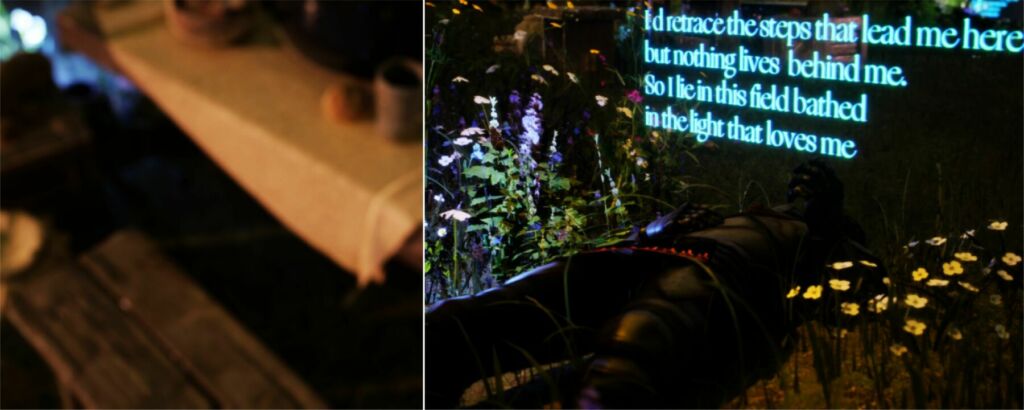
Experiencing your work is like going on a wild, kaleidoscopic, disorienting journey across time and space. What is the process of accumulating, transforming, and combining these often disparate tropes and elements?
Hearing that really means a lot; thank you. It seems to resonate with the reactions I typically receive, particularly at live shows, and honestly, there’s no word more flattering to me than describing my work as ‘wild.’ Last summer, I played at this festival called Narthex, and the next day during breakfast, a few people were chatting about my show, unaware it was me sitting next to them; one was like, ‘it was really strange’ pulling a somewhat annoyed face, and the other said ‘it was almost scary so I left early’. I mean, I don’t understand myself what kind of satisfaction is there to confuse or overwhelm people, and I try not to dwell on feedback. Still, hearing those was rather affirming because it aligned with what I hoped to achieve. Especially when the technical aspects like lighting and sound converge with the music and my mood, post-show discussions can be more like trip reports than club gig reviews, which is quite nice.
Despite how one might imagine by looking at the end product, I rarely have a specific conceptual framework and am mostly driven by purely musical ideas. Half was nearly fully formed in my head, and the other half was just fucking around lazily in my studio. Nevertheless, occasionally, certain tracks and song titles naturally begin to coalesce and form clusters, suggesting the emergence of a specific narrative or an overarching theme, and this whole conceptual synthesis starts unfolding organically.
I don’t really fancy releasing music, and I wish it weren’t. Still, my brain feels wired to release albums or have this production line mentality [I blame my love for this band called Porcupine Tree when I was a kid]. Still, it certainly helps to be able to catalogue or end a chapter mentally, which basically means to be able to start afresh by getting one thing out of my system… I generally refrain from discussing my music as well –finding such conversations somewhat redundant– however, the context of an album provides a different, more compelling avenue for dialogue and a playground for integrated multimedia elements such as texts, visuals, installations and the stories behind them.
I understand that my work can get even more kaleidoscopic with them added. Still, each aspect, whether text, visual art, or installation, is more like stars aligned by chance than carefully curated. Still, they certainly complement and expand upon the sonic landscape. I’ll leave the in-depth explanation of these to the next questions. Still, for now, I can say the way they are accumulated is mostly since they are a natural extension of the reality I want to provide to the album and are in a mutual feedback loop. I work almost all the time, all day and every day, and the stories behind these elements often arise organically and never with artistic purposes, mostly out of jokes or things I want to do for the fuck of it. Then I realise –or imagine– the connections between them.
One thing I hate is that much of my output feels superior to what gets released, yet the sheer volume of my work leads to a pile of such pieces, making it a headache to justify releasing them as individual tracks, and they simply get lost. Just the other day I found a version of a track on EUPHORIA, way better than what’s released and I totally forgot it even existed. Especially given the disparity of sonic material and intertwining concepts, it sometimes can get almost like a mathematical problem to solve, but I care about the overall composition a lot [even more on live shows] and whence I realise the thematic line, it just slowly starts to click. I mean, there are some great artists like [such as Sarahsson, Pietro Bardini, and aya from the top of my mind right now], which I find mind-blowingly full, compositionally surprising/solid, sincere, musically diverse and also somewhat charged, but quite often when I go to raves or see live shows I often am quite bored because most DJs sound samey samey and I feel terminally bored, to be honest.
In my case, I think on this project and the surface of it, I enjoy amalgamating everything from pop to grime to often nonsensical mediaeval shit and AI-generated audio to blur the lines between epochs, reality and simulation, organic and synthetic – but deep down, I think I hope to offer something as mad as possible, something that has never been done, and that is almost a non-musical ambition. However, I am unsure about the answer to ‘why’ or what exactly the process is like. Perhaps rather than a conscious effort, it is the byproduct of a somewhat fragmented narrative I had throughout my life and its multifaceted nature combined with the essence of London and its diverse realities, temporalities, multiplicities and swarm of virtualities coexisting.
The name of your project, ENGLAND’S COUNCIL OF LEGISLATION AND GOVERNING BODY OF HYPER REAL SIMULATIONS AND CONSTRUCTS, steers us into speculative thinking around technologies and their possible centralised structures of control but also roots it in a specific geocultural context. How did it come about, and what does it mean to you?
Around early 2021, I was pretty into Unreal Engine, primarily to re-create/archive scenes inspired by real-life events and memories, pretty random stuff like, I don’t know… kaleidoscopic moss patterns in a park toilet late at night, a small rave surrounding a graffiti and candle-adorned Lamborghini or a scene inspired by a vivid lucid dream set in a late-night park. The last one, for instance, later evolved into “Fucking with an online date at a beautiful natural spot somewhere in Beckenham Place Park,” which premiered on FACT Magazine; the rest are used on live A/V shows and some web art.
One evening, after briefly showcasing these to a friend, she said, They are so beautiful, I could spend days inside them. Then, with a smile, she asked, Is there anyone overseeing or regulating these before they go public? That comment hinted at the almost dangerously captivating nature of these 3D environments and spurred an immediate thought and response from me—I chuckled and said, Yeh, now.
I admit it might sound a bit pretentious, possibly even more so than the name itself, but at the time, I likened it to the genesis of the Sgt. Pepper’s Lonely Hearts Club Band. Just as Paul McCartney was inspired to create an Edwardian military band from a simple mishearing about salt and pepper on a plane, my concept was sparked by a friend’s remark about the virtual world I was crafting, suggesting that it was so enchanting that it warranted oversight by a council – and personally, I was at a stage in my life I needed a fresh framework and inspiration.
So, the whole banter led me to envision a fictional deep-web or internet-based organisation from the future, tasked with legislating the research and development of the ‘hyperreal’ and releasing my creative output as the work of this entity. And even though the idea originated from a virtual construct, I knew from the outset that its core would be about our methods of world-building and our perception of reality rather than being limited to the virtual or gaming realms. In essence, while it focuses on the virtual and cyber, it’s definitely more about how these elements intersect with our layer of reality. These constructs get installed and uninstalled in our society and daily lives. However, with the release of technologies like Sora, I reckon it just might return to its origins very soon.
The name’s genesis and geocultural significance are somewhat arbitrary and stem from a desire to create something striking and uncannily plausible. At the time, I remember my web browser was open on the Arts Council page – I had just applied there [unsuccessful, of course] – and was contemplating a name for this allegorical yet real council. Everything I brainstormed sounded too much like an obvious art project and lacked impact. Then, almost on a whim, I added ‘England’s’ to the name, inspired by the Arts Council page. This addition made it sound simultaneously more ludicrous yet strangely more and equally less ‘valid’; thus, the joke was fully materialised.
The name’s impact became apparent before a Cafe OTO show. I was having coffee outside the venue when I noticed a group of people stopping to read the full name on their chalkboards. They genuinely seemed puzzled and interested in what that was. Initially hesitant, I eventually joined their conversation, introducing myself. By the end, I was convinced that no other iteration of the name would have had the same effect.
When asked about my alias or when explaining acronyms like ecolagbohrsac2021 –which I often use on event posters, handles, etc–it feels somewhat awkward. Nevertheless, I view it as a worthwhile compromise. I’m fully aware of its impracticality in terms of commercial appeal and bookings—after all, one way to put the name is as a random string of characters, and the other is two lines long –it doesn’t even sound or feel like a live-act name. Still, despite all this, I’ve grown quite fond of it, and it resonates with people more and more every day.
Several pivotal moments of inspiration and critical checkpoints helped the company achieve its full creative vision. One particularly striking instance was finding a magazine on a park bench by the Thames. Dated November 2022, it was crafted as if bands like the Backstreet Boys were still in their heyday, complete with old photos and articles, effectively simulating a current cultural snapshot.
This magazine felt like a direct yet poetically charged assault on the reality and temporality of our contemporary culture, with the online mash-ups all leaking into reality but almost more effectively and offensively. I found it beautiful and almost therapeutic, a balm for a discomfort I couldn’t quite identify. Yet, it also stirred a sense of disconnection, a foreboding end to the culture as we know it or as if we ran out of newness and were stuck at this edge in need of a last push to break through.
Around that time, I was also deeply fascinated by mediaeval tales of asynchrony and felt in one but in terms of culture [pop mostly]. I felt the hauntological vortex accelerating the past forward and crushing the present. This duality inspired a series of musical and conceptual works, most notably encapsulated in two Bandcamp-exclusive collections: ‘The Other Syde’ and ‘STAR.SHIPS’ – which, especially the first one, I regard much better than anything I released and in its totally unfinished state I love it so much.
In musing over the concept of ‘ENGLAND’S COUNCIL OF LEGISLATION AND GOVERNING BODY OF HYPER REAL SIMULATIONS AND CONSTRUCTS’ on a relatively more personal level, my thoughts often gravitate towards our methods of crafting worlds and how we perceive reality – with a tint of my relationship with those. Ironically [given the project’s name], I tend to avoid taking firm stances nor have a set-stone opinion on these matters. Still, particularly around the pandemic [now I’m utterly bored of these topics]. Like anyone else, I’d frequently ruminate on the societal repercussions of phenomenons/constructs, the revival of antiquated ideas/styles, mutations of history, meta-internet culture, metaverse, etc.
Even back then, I was inspired by poetry in approaching these topics and publishing works using allegories with a story of their own instead of one-dimensional ‘fiction’ or ‘speculation’. I think there is almost no art in this. Still, to me, at least it offers something more valuable than just a speculative movie, music or script – slightly different from the possible perspective of a social scientist, theorist or researcher.
For instance, I remember pondering about the revival of RPGs [and the totality of revivals of revivals of revivals] and, most notably, their new place in our daily life, whether it’s merely an escapist fantasy or a potent tool for re-enchanting our world, imbuing it with meaning and wonder that transcends the mundane. I was somewhat struck by a profound sense of wonder as elements from my childhood began to permeate quotidian existence, which, for example, appeared to have found its way to our reality through the magic of capital/cryptocurrency.
During the pandemic, I wasn’t on social media and felt that however naive it may seem, it resulted in a different critical lens, way of spending my time, and even a sort of detachment from the collective mind, more wrapped in my own imagination a bit more in the critique of stuff I’d be seeing around. For instance, a vast majority of the work I’d come across felt related to different times and places [Otherness], which in some ways felt deeply romantic, reminiscent of old-age painters who dreamt of speculative and varied timelines – it all made sense given the societal situation we were in.
Still, ironically, I’d find the emerging trends in things such as digital fashion and AI art somewhat uninspired and lacking an emotional depth. There was also a palpable sense of a distorted reality, most notably in the use of language. It seemed as though the previously linear narrative of life, which had masked the social constructs and narratives we live by, was suddenly unravelling in all its senselessness. So, there’s a lot of that critique and works in an attempt to counter that around the multimedia layers. Now, looking back at it, even the Crystal Palace video I mentioned earlier feels like my stupid attempt to engage with this fluid concept of time, especially since the palace is being rebuilt now, struck me as a symbol of restoration and rejuvenation.
This theme of reconstructing the past, or perhaps reimagining it in the context of the present, became a significant aspect of my work and reflection during this period – almost a counter-statement to a view of a zombified world where the future appears full of death, and the past is the only source of inspiration. I rarely reminisce about my past in general, nor do I think we should fall into traps of ageism or resign from a reality-based lens. Still, I guess there seemed to be an intrinsic need to commence reconstruction somewhere.
Now, when asked about texts and such, the way I frame it is below, and I think it does a good job communicating what essentially it is now. Started off as a late-night joke but quickly morphed into a conceptual multimedia-art powerhouse/colossus; it serves the artist as a playground to explore various topics such as experiences of synchronicity, blending of reality and fiction, multi-layered storytelling, world-ing, utilisation of artificial intelligence and creating abstractions built on top of real places to provide a fictitious landscape for the music and personal archive of geo-specific work.’
Concerning its cultural relevance, taking AI training as a case study may be worthwhile. Nowadays, you can turn on the telly people talking about it over morning programmes; there’s increasing talk about establishing a higher authority to oversee and regulate these burgeoning technologies. Considering the complexities of international power dynamics, I find even the concept of an international regulatory body might seem idealistic, however the mere fact that we’re acknowledging the potential risks and promoting public awareness marks significant progress. Taking that and applying it to a philosophical and societal legislative body that actively studies our sense of reality somewhat seems utterly imaginative but proposes a fun playground to work with.
At this point, with the release of Sora and beyond these vague clouds of ponderings, –I find myself amused by the fact that a few years ago, all this was banter, and now I’m rambling about all these and how speculative society magic could be legislated and advised– I mean don’t get me wrong, it’s still pretty much a meme, but I saw this YouTube comment on a video I made years ago asking to be hired by the council – so now I’m like I might start a website and figure it out myself how it’ll go.
The quandary is that I often find myself in this dilemma; when I look at it from one angle, it appears as a meta-critique of the existence of any authority, but from another, it looks like it’s birthed from a source actually in favour of such an overseeing body for the sake of all for the time when we’ll come to an understanding that the lost sense of reality is a threat to our race just as nuclear war or climate catastrophes.
Lastly, I mean it was and still is a joke, at one point, following the launch of an experimental forum/messaging board named ‘MEMERGENCE OF DOOM’, there was a time when the project felt like it materialised and transformed into something tangible. I was the architect of it and subsequently managed as the main administrator and software programmer. More in jest and for aesthetic value, I launched a deep-web forum, and I later invited a small group to contribute actively.
It was conceptualised around the principle ‘observations are not explanations.’ to explore various social constructs and their gratifications, delve into the impacts of ‘memefication’ or the ‘deprogramming of memefication’, provide a platform for posts that challenge reality to sustain its functions, and serve as a ‘tool for realising the most magical prophecies and memetic synchronicities’. The first iteration of the forum was active from late 2021 until summer 2023 but was recently closed following a consensus among its members – detailed further below on another question.
I have plans for the new chapter of this digital odyssey alongside a few publications, but time constraints have delayed this. I aim to launch it towards the end of the year. In the interim, I’m compiling a crypto-pamphlet from various threads and images posted on the site, which will be the second textual publication under the ecolagbohrsac2021 moniker.

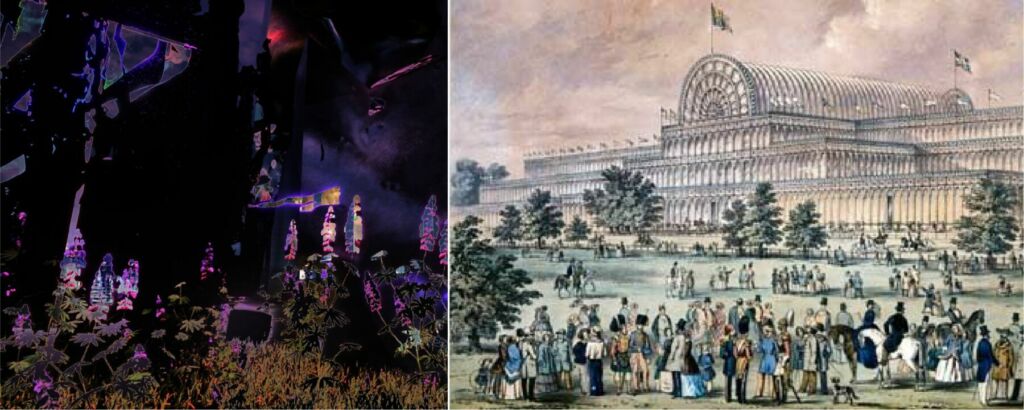
You call the project a multimedia powerhouse, conceptually focusing on mythic themes/folklore that populate the archetypal strata of the modern technological psyche, meta-hypermedia hell and a celestial battle between the memergence of doom and the corporeal white garden. Could you elaborate on the tensions present in this vision?
Even though music is always the foundation and torchbearer for the conceptual path of whatever I produce, one of the aspects I’m particularly pleased with regarding this project is that it allows me to publish all sorts of art, such as text-based experiments, web art, experimental location-specific stuff to VFX heavy/visual augmented club shows. I think, especially studying the connections between the works in varying mediums and attempting to describe ecolagbohrsac2021, the term ‘multimedia powerhouse succinctly’ felt the most fitting.
I acknowledge that it may come across as both ambitious and somewhat vague, but it encapsulates the broad and dynamic nature of the project. For example, a work that I think is somewhat underrated is the ‘so-called’ leaked governmental documents called CRYPTOLITHS.
Like the project itself in a broader sense, the new album ‘EUPHORIA’ extends its branches into various multimedia ventures. I think some of these even eclipse the music in terms of their potential impact and personal significance. I’m not especially keen on the term ‘lore’, so I’d say that the album possesses its own reality, and these either contribute to reinforcing it or pay tribute to a different time segment/sub-construct of it.
The MEMERGENCE OF DOOM forums, Writings/cryptoliths [WIP, mentioned above], Instruments of EUPHORIA [Installation], The MEME-ORIAL PARK BENCH [and various music and crypto tokens that go along with it], UE5 builds [mostly used on live A/V performances], The EUPHORIA’Legend’ tripping sites across London.
Regarding the project’s underlying theme of duality and the tension around it, there’s a substantial conceptual layer devoted to the notions of control structures/power dynamics and the aftermath of extreme digitalism. Even though they seldom intertwine with personal experiences and metaphors, they present themselves at different scales and perspectives—often in enquiry rather than solid proposals or ideas.
In the case of ‘EUPHORIA’, as in the album, this certain perspective of duality became more apparent after all the tunes were finished. While distributing the tracks across the two sides of the LP and working on the design, sharing fragments with a bunch of friends and colleagues, I started to decode a pronounced theme of duality: the Welsh painting on the cover, the Baldur’s Gate 3 sample [a foot on both sides], the duality of euphoria as a state itself proposes was all interspersed throughout the work…I
generally resist the simplified, memeified dichotomy of good versus evil, even though in a city like London, the struggle between metaphorical angels and demons and the normalisation of ‘hate’ is almost tangible. I think I’m known for taking the piss out of almost everything, but in reality, I just think everybody should love each other, and I like everyone <3. Yet, during the album’s conceptualization, particularly its shadow side, I couldn’t overlook the cunning and diabolical exploitation of things I care about, turning them into tools for something even more malevolent.
Thus, ‘EUPHORIA’ gradually transformed into an album emblematic of certain aspects of London, draining energy from both universes and realising itself almost as a scrapbook of scribbles from economic to technological to historical dualities such as past vs. modernity and so on – where the darker side focuses on a study of techno-capitalism enforced dankness/darkness, multiplying itself like a virus through blood-covered memes and fuck all lores and the white-garden as a technological and natural utopia. Both constructs slowly populate the archetypal strata of the modern technological psyche.
I must note that, even when engaging with the so-called shadow aspects or making a case, I don’t see my outlook as anything remotely pessimistic but rather pragmatic in acknowledging the presence of duality as a first step to encountering what isn’t the best for our psyche and race. Referencing Campagna’s ‘End of World[s]’ talk [just incredible], and slightly influenced by Babylon 5 [my fave series ever], the analogy of a ‘celestial battle’ presents itself as a useful metaphor in constructing stupid lore around such conflicts and the interplay of diverse energies.
Take, for example, as a more elaborate example of what’s above; some doom/shadow factors could be atomic bombs, invasions/wars, banks and pensions investing in fossil fuels, threat of extinction, strange weather, police force, surveillance capitalism, rule of algorithm, and environmental damage, contrasted with elating technological advancements like artificial intelligence, humour, community building, critical and individual enquiry on what’s around us which originate from this metaphorical ‘white garden of corporeality’.
At one point, I could even discern two contrasting aspects of myself: one indulging in decadence and a personalised form of accelerationism, characterised by capitalist fantasies and ecstatic recklessness [symbolised by the Lamborghini], and the other more reclusive, content with the simple pleasures of life, like sleeping every day all day at a park and making music all night, dedicated to my craft not fussed in engaging with any system or worldly expectations [symbolised by the park bench].
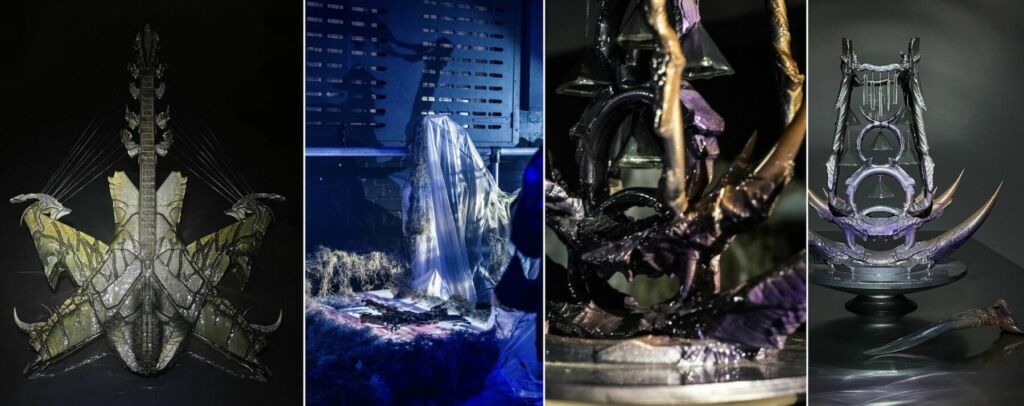
Exhibit design & curation by Most Dismal Swamp. Photography by Matt Favero. Exhibited futur.shock1 at FOLD London (2022).
AI has been an important element in your creative process, which aligns with the project being so deeply rooted in mash-up and remix culture. It also raises questions of ownership, agency, and collectivity. Where do you see the potential of working with AI in the context of ecolagbohrsac2021 specifically?
Around the time I began creating music for this project, I stumbled upon a quote from a Scarlet Imprint publication [the specific title eludes me; I don’t dig occult/magick vibes overall, but I hold much affection for their work] that struck a chord with me and continues to resonate deeply. I find it both comforting and inspiring, so I would like to start with it this question:
‘Just like younger generations today, mediaeval scribes took networked creativity for granted and were deeply embedded in a ‘remix-culture’ with Latin as its lingua franca, in which textual traditions were spaces of shared co-creation beyond the boundaries of one’s present time or location.’
Mash-up culture is central to this project’s musical dimension, frequently operating in a synergistic feedback loop with AI-generated material. In contemplating the essence of the creative process and agency in working with both, I recall these lines of poetry –the source for this one also escapes me at the moment– and I can’t recall the exact wording. Still, it was something like, ‘yesterday, I heard a bird singing on a tree and sang its song as if my own for the rest of the day’.
I find it reflects on a profound layer of connectedness, a broader sense of ownership, and the very nature of every creative act. I’ve always felt a degree of unease with the thought of using someone else’s music in mine unless it holds significant emotional or meaningful value, but I’ve always enjoyed recording/sampling almost everything around me. It’s almost my way of communicating with what’s around me and creating marks in time.
Around the time of the virus, engaging with most of my musician friends solely online at the time, I’d be posting tracks and bouncing ideas on stuff like Soundclown [deconstructing and reshaping memes and popular music, recontextualizing the sacred texts of millennial chat rooms. –Audra Schroeder] and make 4-5 edits/mash-ups a day for fun, sonically jumping schizophrenically from one epoch to another and mostly at the park on my laptop until the battery died. At the time, I didn’t regard these pieces as my music, nor did they feel that way – I didn’t give a thought about ownership, but I thoroughly enjoyed their dual nature; they were made for a laugh, yet they also possessed a reality-bending quality which I kinda found lovely, humorous and playful.
Even to this date, my favourite is MEDIAEVAL HYPERPOP, a mash-up of GFOTY, some samples from a YouTube playlist called ‘Medieval Music—’Hardcore’ Party Mix’, and Skepta. When I’d be making these, I remember finding the re-use of memes, the meta-satirical take on online content, and cycling what’s essentially trash to be something more than just ‘filling the void’.
I mean, mash-ups certainly are not the freshest of medium or stuff out there, even mostly associated with rave culture of the 90s, but particularly around viruses, the level of blatancy in them, this cyclical redundancy, though seemingly a creative impasse, to me, seemed as if an attack to the fact that there was nothing left to do creatively but to reuse what now is digital trash signified this image of ‘fertile ruins’ and their un-newness – almost felt as if they were functioning as instruments for assaults on reality almost to keep its functions alive and a drive to halt the ‘..the ‘jumbling up of time’, the montaging of earlier eras’ by pushing it to extremes until it’s completely devoid of any meaning and simultaneously not so– to me making them both invaluable and fascinating elements within the conceptual framework.
For example, the aforementioned magazine with the Backstreet Boys and the music I made after seeing are a few examples. Overall, I was particularly drawn to creations with a mediaeval flavour, quite possibly owing to my previous forays into folk music, such as a project with Sand Snowman, A Tryst of Wolves.
Within this project’s scope, I remember one particular incident playing quite an important role in mash-ups and their vision, which happened while I was deep into a track with my headphones on late at night. I suddenly heard these faint, grime-like vocals intertwining with my Digitone. Initially, it was quite unsettling, but I soon realised, thanks to intermittent advertisements, that the Crystal Palace radio tower was inadvertently broadcasting into my equipment – a not uncommon occurrence in the area.
I found it quite sick and attempted to mimic this effect, adding layered vocals [with a shit ton of unison] to the piece, and it eventually evolved into ‘Docile Goetica’. It sparked a somewhat scientifically whimsical vision of a sonic vortex around the radio tower, swirling with music from all eras and fueled this creative desire to craft pieces with a maximalist ethos, combining the sonic elements, ideas and visual elements not bound to my present time or location, and make them work compositionally [What I liked was chunks of time altogether, every real moment] and saturate the field of the possible, utilise the forces of chaos to establish order in a new imagined reality.
One of my favourite elements in the track is an arpeggiated Rachmaninoff piano hit, and the repetitive mourning voice of the FM flute melody slowly builds up to a primordial, disarticulate anti-music. I reckon it was one of the first instances where I felt 100% about including elements that I normally don’t do, such as vocals, in my output.
Subsequently and somewhat ironically, I wanted to integrate some of these elements into my primary work. I recall a specific conversation with the manager of a different project of mine at the time about a Kanye West mash-up titled ‘OCCULT POP’, which I whipped up in about 20 minutes. He warned that it could potentially lead to a lawsuit.
I thought, rather cheekily, that being sued could be quite the PR stunt. However, I spent late nights developing AI models and generating AI-based samples. It allowed me to infuse my tracks with similar timbral quality but added this feeling of unrealness, which felt like another layer of ruin. Initially, I was not a fan of the nonsensical, gibberish-like vocals produced by AI, but I still am not a fan.
Still, then it dawned on me that since I’d be fucking up the samples and contributions to an unrecognisable degree anyway, it didn’t matter. This approach turned out to be more meaningful in terms of cultural references and conceptual keystones; on the flip side, while I might be sampling real people to an unrecognisable extent now, I can still inform record labels, distributors, and the like that the samples were AI-generated, thereby sidestepping copyright concerns. It’s a well complete muddle of fact and fiction.
My interest in AI goes back to around 2016. Around then, just as a self-indulgent hobby, I was quite into machine learning, trying to get as DIY and as low level as possible, learning calculus all over again and programming my simple and naive RNNs [best era for AI music <3] and so on. It eventually led me to perform a meme track called A.I.F.X [yes, an AI model of Aphex Twin], even playing at festivals
like TodaysArt and Sonar. I then met Google Magenta’s Director after a show in the queue, did a bit of testing unreleased stuff for them, and then was on OpenAI’s artist program for earlier ChatGPT models and DALL·E 2, which was great fun.
These days, there is this sort of nostalgia in me for this more DIY approach where you could experiment with your own code in AI – whereas these days, it’s completely abstracted away behind interfaces and mostly impossible to tackle on such a level simply because there is no way to run such computations on personal computers and there isn’t much excitement beyond what was possible 4-5 years ago. However, A.I.F.X is returning on the 9th of August at an event [NEWPHORIA: THE END OF REALITY RAVE]. I’m co-organising with Fetchish, and I’m super hyped about it.
In the context of working with AI, I generally find approaches like announcing or making an album with the mentality of ‘Here is my new cool album with synthetic AI vocals’ uninspired, terminally boring, and lacking in expressiveness. In ‘EUPHORIA’, almost every track incorporates some form of AI technology, each for varying reasons and inspired by different situational contexts.
I strive to be more mindful of how it enhances my creativity and the ideas it can help convey at a deeper, more intrinsic level rather than merely fixating on the medium – I mean, it’s easy to fall into the romance of its ghostliness and all that and even if there was a magic to the technology, it’s dispelled by it’s very mentioned, and it overshadows the essence. I’ve always found the best artists are those who don’t consider themselves as artists and their work, which they think is most irrelevant and hidden, the most special, so perhaps in similar thinking, I feel like if the work would be more substantive if they wouldn’t need to highlight this aspect at the forefront of its presentation as a defining feature.
I remember this one incident where I made one particular track and sent it to a friend and he was like ‘oh it sounds like X’, which then I had to reply ‘oh rly :/‘ and didn’t even mention the process of making that track. Highlighting the inherent complexity in the interplay between originality and influence within musical creation, the piece underscored a deeper, perhaps subconscious, engagement with reality—a form of artistic recontextualization where a piece, initially conceived as a mashup, evolved into something uniquely significant in its own right. This process, to me, seemed far more culturally resonant and stimulating than merely producing an AI vocal album and replying ‘yea’ to my mate. One recent example I noticed is OPN’s ‘Memories of Music’, which is just so lovely.
On the album, there’s this one track I’m particularly chuffed with where I’ve used AI – it’s called ‘Within the armour is the butterfly and within the butterfly—is the signal from another star.’ I made it on the N3 night bus [after I left work around Southwark where IKLECTIK was], employing a well-known technique termed ‘priming’.
This method involves supplying the AI with a segment of audio – say, ‘x’ seconds long – as a starting point. The AI then starts to generate music to continue the track. I’m sick of the word, but it ‘speculates’ how the track could have continued based on what it heard, almost like creating different branches of its possible futures.
I often relish the challenge of crafting straightforward tunes during my 30-40-minute bus rides. That particular night, the ambient chatter and the urban soundscape seemed more melodious than usual, so I captured these auditory snapshots of the bus and the city environment and fed them into the AI model. Remarkably, without any specific textual cues, the AI spun these sounds into a track reminiscent of Burial.
It felt like the algorithm just latched onto the vibe, creating a rather captivating sonic backdrop – I mean, the track almost sounds wet [the bass line…], which is so mad. My former manager said we could push for some press mentions with headlines like ‘AI model sounds like Burial’, but that approach feels self-aggrandising to me.
On top of it, while I was still on the bus and listening to the generation/track, I got a buzzing message from a friend, asking me urgently to have a gander at this new thread on the MEMERGENCE OF DOOM forum. This thread would later catalyse our decision to shut down the forum. It was a repository of bizarre documents, an amalgamation of charts, reports, and annotations on AI bots programmed for human interaction via voice and text chat in multiplayer games.
These bots were crafted to adapt endlessly, their sole purpose being to sustain human engagement in the game, employing tactics that oscillated between provoking irritation and mirroring humour to keep you hooked. For example, one study proposed the existence of two or three types of bots in an ideal game setting: one to form alliances with, for example, by exchanging memes, another to pose a competitive challenge, and perhaps a more simplistic bot as the butt of collective jokes.
Suddenly, it painted an even more bleak and grimly dystopian future, a more hyper-technological nightmare than I thought I’d ever be able to dream up – where not just the advertisements but the entirety of our lives are orchestrated by an omnipresent automated capitalist regime, constructing more and more subtle simulations and hyperrealities around.
I mean bots in multiplayer games like Call of Duty exist but I reckon the degree of interaction is nowhere close to what was on those documents. Thus, this track transcended its musical boundaries, becoming a sonic and conceptual diary of this speculative, proper, desolate vision. My experience with pre-release AI model testing only deepened my disquiet about the origins of these documents, particularly given the anonymity of the account involved.
Currently, I’m weaving these leaks into a textual piece I’m composing, aiming to cloak them within a narrative resembling a mediaeval lament. This narrative delves into the profound realisations of one’s true online interactions, written from the perspective of a human slowly understanding the nature of their online comrades, enemies and mates. This context illuminates the track’s enigmatic subtitle, ‘reading DarkNet papers on NPCs in multiplayer shooters imitating humans, “yeah, they were probably bots all those years even on voice comms”‘.
That bus journey, the experience of absorbing the AI creation, flicking through the PDF, interspersed with glimpses of people lost in London’s nocturnal reverie, ‘spectating’ people lost in late nyte London euphoria, was nothing short of poetic—an existential tableau of the digital age. Given the full story of the piece and the role of AI, maybe I sound rather full of myself. Still, I think it’s a more creative utilisation of the tech almost to use it to interact with the fabric of our reality, utilising it to somewhat express an experience of life and form of culture around you, almost as if paying homage to a previous reality from the one I reside in.
Perhaps a bit like Burial’s nostalgic reactivation of a past –that was never lived and a future that never came to be– but the ‘past’ replaced by ‘reality’ where the sonic remnants and distant echoes are now a layer beneath at the ruins of a lamented history. Now, this is the new layer on top of it. So, it was not about employing ‘synthetic AI vocal shit that is magically gibberish’ for the sake of gimmickry, nor romantic in any way. Following all this, I have chosen to release an unaltered AI-generated piece only in this instance as it was created. Ironically, the track, featuring ‘gan-synths’ in its title, is not a product of an AI-hinted sound generation [GANs] but an actual recording captured outside a rehearsal studio in Crystal Palace. Yet, it was the one a few friends thought was AI-made and not the other.
In addition to that track, the first single, ‘CRYSTAL SWAMP POP’, features an angelic outro section created using a John Dowland AI model, processed with modular synths re-synthesising the sound using a couple of complex oscillators. Funnily enough, it reminds me of a tune a friend used to hum years ago, and it has almost replaced my memory of the original song.
On the final track, ‘Nick Drake summoned from Pandemonium Matrix to a 3D white garden of pure euphoria with glittering birds and .gif flowers [purchase your tickets now!!!]’, there’s an audible presence of an AI model, needless to say, based on Nick Drake, vocalising the words from the last track’s subtitle of the preceding LP: ‘by a sacred place capable of representing / to garden with you was to place oneself’.
This album’s conclusion was designed to offer an extended period of repose, a kind of auditory sanctuary. I don’t want to say ‘to process’ the album or anything of that sort. Still, it’s rather about compositionally immersing in a state of euphoric tranquillity that, in terms of duration, outweighs everything preceding it.
What I like about it is that it seems OpenAI might have incorporated some radio chatter into the training data, or perhaps it inadvertently bled in from the raw datasets, creating samples that gradually morph into a dialogue while preserving their tonal qualities where you almost hear a distant sitting Nick Drake having a conversation with another entity with with subtly discernible words and phrases such as ‘a greater realm’, embellished with sounds that one might describe as alien insects, the gentle pattering around a pond, and the whisper of leaves rustling, all converging to create this sonic painting of a digital Eden, late at night at a park. It’s somewhat hinted at in the track’s subtitle, ‘[purchase your tickets now!!!]’; in collaboration with Soundobsessed, I devised crypto-keys that would unveil the ecolagbohrsac2021 x Nick Drake album named ‘Blood Moon’, alongside its virtual counterpart – a venture still under development.

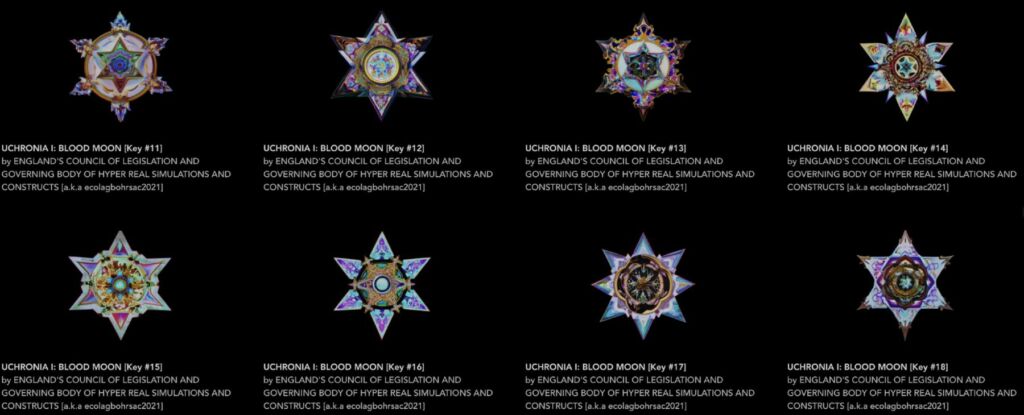
Regarding some of the non-musical applications of AI, ‘The Instruments of EUPHORIA’ are relatively more accomplished than other endeavours—such as a failed fashion project—and are the ones that I’m most smug about.
Basically based on the idea to make my own instruments and sound-making devices such as metallic bells and even a stringed instrument from the burnt remnants of my old Lamborghini, along with other personally significant items like glow sticks I collected after playing at a squat, birches, and swamp slime for strings, among other things, I was pondering the design and I decided to use DALL·E. It was during their artist programme and I thought it could be a nice use case to create sketches and ideas of what I can do with the objects I had.
Intriguingly, as these images evolved, they began to resemble artefacts displayed in a museum or gallery, leading me to envision them as a collection of devices used in the creation of the album and later unearthed from the swamps of Crystal Palace in some distant future. It’s peculiar, but through this self-induced hallucinatory feedback loop, creating these images became one of the rare instances where something tangible, rather than just abstract ideas, influenced the music. It also enhanced the project’s memetic lore and augmented my imagination regarding sound design and musical composition.
Ironically, later on, I did get two of these instruments [displayed as replicas of the envisioned originals, as seen in the photo above] physically crafted and showcased them at an event curated by Most Dismal Swamp at FOLD. Still, most people were convinced that they weren’t actual [even in some cases claiming the AI-made ones are real while the real ones are AI-made, which I confirmed to be accurate], tangible creations, which is so mad and cool. This response has inspired me to roll with the narrative I’ve spun; to ‘fulfil the prophecy,’ I’m now contemplating the idea of ceremoniously depositing these instruments in the swamps of the park. It’s quite quirky, so I’m just biding my time to carry out this symbolic act… Perhaps, if I get to curate a Medieval EDM Festival at the park and perform at the Bowl one day, I’ll fucking do it.

In the realm of AI art and its surrounding cultural milieu, my focus, admittedly, lies primarily with my own creations, not arsed about anyone else’s work and a certain amount of ‘thinking’ goes into my practice. Yet, through my involvement in testing AI models for organisations, engaging in some curatorial activities and often involuntary discussions, I’ve been increasingly exposed to a diverse range of artistic works. This exposure has inadvertently nurtured a more discerning and opinionated perspective within me concerning the intersection of art and technology. It’s my observation that a considerable swath of art that either directly employs or conceptually revolves around AI tends to be profoundly lacklustre – particularly works gravitating towards themes of magick, mysticism and the like.
When I consider the output of some mainstream AI/‘lava lamp’ artists and the way they interact with the world, sentence structures like “I’m everyone! You are no one!”, bold proclamations of representing a ‘community’ and making it a matter of ‘inclusivity’ [imagine saying the thing before and then using this word..] particularly recalling this article about Gothic Insurrection and the part about the demonic saying ‘I’m Legion’, maybe they have nothing to do each other but even before the connection, it truly sent this shiver down my spine feeling as if I’m walking on the edge of an abyss – particularly the weakness in getting that worked up upon a negative comment on your work, to me at least, is indicative of a very muddy and negative headspace.
So, in encountering such works that utilise AI –or any data for dynamic particle effects– I leave perplexed, not that I don’t appreciate the effort but that because these creations appear as the output of an immature psyche, lacking any substantive narrative or emotional depth, repetitively applying the same effect to various latent spaces and random dataset variables, amounting to nothing more than soulless digital art.
They even leave me in a state I’m too fucking embarrassed to say I even use the same medium. On top of his less-than-average VFX and rudimentary particle effects, one might find on an old forum [like that lame blue cube particle preset], bearing little to no substantive connection to the complex datasets they purportedly represent, let alone transcending the medium, they bleed inside, reeking of death and end-culture.
I recall skimming through some article once, titled something like ‘new media or porn of aesthetic blandness’, which still strikes a chord with me; for instance, I recently saw a work seemingly relating to the pigments and colour of flowers, and I left the building recalling an instance when an acquaintance adjusted the placement and angle of a flower pot in a restaurant upon sitting on a table.
In my opinion, even that simple yet profound act conveyed more artistic truth. It was charged with more emotion, a sense of aesthetic, human connection and a relationship with the reality of flowers than anything these artists could conceive and dream of capturing with whatever these artists trying. I find more transcendence in things. I don’t know, like the on-surface simplest of stuff like Mark Kozelek singing about crab cakes or my mind wanders to actual scientists in their labs or Julia Butterfly Hill when I see these puppet-like artists at world forums, biennales and all – to me, it feels a bit like Žižek’s remark; they don’t actually want anything to happen.
Worst is when I read comments comparing them to screensavers, I mean reckon they do a disservice to the very concept of screensavers, which, in their unassuming simplicity and lack of promise, possess a certain nobility. However these works both fail to communicate with what they claim to communicate whatever data or knowledge they might be nor are on a quest for a deeper understanding of the medium.
I’m not interested in over-romanticising AI either, but such works and such utilisation of AI seem to emanate from a place of defensive arrogance, devoid of any substantive narrative or introspection; it feels like the artist behind has no story and as if it’s coming from a psyche of an 11-year-old boy who just watched Bladerunner and fell in love with it at its most basic level, to the spectacle in the most shallow possible manner – I mean we all can agree the movie has a spectacle. Still, it’s not what it makes it Bladerunner, it’s the music =).
On the other hand, listening to Nick Cave’s critique of ChatGPT [eloquently read by Fry], I find myself in staunch disagreement. Such advancements exemplify the zenith of scientific inquiry, human creativity, and intellectual pursuit, and we should be criticising the utilisation of it, not the tech itself. It only serves as an introspective tool, reflecting on our psyche and the very essence of creativity. Dismissing AI as a mere replicator or constraining songwriting to the realm of ‘blood and guts’ seems to me an overly simplistic view of it. As someone appreciative of artists who do not always take themselves utterly seriously, there is a layer in me opposing such a stance.
For example, in using AI to integrate Nick Drake on guitar and vocal within that last track, there was an element that transcended mere imitation, affirming the presence of my creative spirit. Indeed, Nick Drake has always occupied a sacred place in my heart. Still, the application of AI in sculpting that composition is unbound to the spirit of Nick but to its numerical matrix derived from his work by the algorithms and more closely intertwined with my own narrative –compositionally serving as a fitting conclusion to the album. So, maybe I’m fully mistaken and lost in my creative sense, but I’d like to think that there is something much more than creating an imitation in a few minutes, and my humanness is not in question.
Ironically, I couldn’t help but feel that Cave’s assertion that ‘ChatGPT has no inner being, it has been nowhere, it has endured nothing’ could just as readily be applied to the works of aforementioned artists, who, despite their claims, often embody the antithesis of progress. The genius of figures like Warhol lay in their ability to infuse the soul into what might otherwise seem soulless; they utilise irony, provide a backdrop of poetry and personal story, a questioning of life [and of death]. In contrast, the works I’ve encountered lately seem imbued with a negative force; they almost strip down the poetry behind such marvels, reducing them to weak spectacles, a stark opposite to all I hold in esteem.
We live in an age where it’s extremely easy to create content, write, and speculate, but things of human experience and stories are becoming less and less common. ChatGPT and such aid this ease, but I don’t think it’s necessarily bad. What I think is damaging are the emotionless re-enchantment attempts supported by the system to distract. In contrast, we should be focusing on rewilding stuff, not more layers of hyperreality and particle porn. Take, for instance, terms like ‘immersive’ that are bandied about. Whenever I fucking see it, I find myself in retreat and in a deeper connection with the visual allure of, let’s say, a Turner painting or the palpable emotions that once breathed life into Warhol’s prints, in need of a unbridled, raw reality, not bloody mirrors around.
Regarding works that engage with AI either conceptually, through philosophical or social science lenses, I recall attending the ‘Future Shock’ exhibition at 180 Strand, notably featuring a short film about an AI car lost in a city. Intriguingly, the exhibition received a rather notorious review in The Guardian – not that I particularly care about such critiques, but it was mentioned to me prior, and upon seeing the exhibition, I found myself largely agreeing with it – especially that it mostly was about mindless escapism with no actual ‘shock’, ‘emotion’ or ‘story’.
A friend I was there was like, ‘WALL-E was better, I cried watching it,’ which, while seemingly humorous on the surface that it just doesn’t make much sense to compare almost anything in life, it echoed a deeper sentiment. In contrast, I’d probably leave the space untouched with indifference, thinking it is what it is. It got me thinking as I could see a bunch of layers under that comment, and in fact, we could compare them. For instance, one could argue that WALL-E is merely a big studio production, not a singular artist’s vision, but that doesn’t detract from its validity. The film’s narrative hinges on the protagonist being a machine, an artistically significant concept devoid of pretentious philosophical overtones that often overshadow other works.
There’s no reliance on proclaiming its creation through a ‘game engine’; the focus is purely on the story, yet it is somewhat way more profound, surpassing much of the slick-looking but unmoving game engine philosophy. And even though, let’s say the work artist’s focus was solely the cars or surveillance, it still does not convey any emotion or intellect you otherwise may not have about AI, and there is more to WALL-E’s body language than to its research and story, ironically ending up more childish than a lovely Pixar movie <3 I even found the writing in this game called Cyberpunk 2077 about this rogue AI taxi Delamain more creative than any of that.
The relationship with its sibling cars, the interactions with the sibling/runaway cars and all were way more emotionally moving [ Excelsior staying with you + the messages it keeps sending you..] than the hypothetical, slick on the outside but dead-bland visions presented in those works – plus, the way better aesthetic of the surrounding city/build or Pain by Le Destroy playing in the background while you’re interacting with these cars were are cherry on top. I am not sure why that side-quest or a Subreddit about ChatGPT isn’t more of an art than what’s around these days or talked about more; I reckon it’s because people who do interesting stuff can’t be arsed with pushing their work further, and the field is left mostly for boring stuff to be presented as fresh and interesting.
So, looking ahead at the role of AI in ecolagbohrsac2021, I sense a diminishing reliance and interest in using AI in my music. I’ve always enjoyed making music from my own things, designing the sounds from scratch, and even building my own instruments. Since my primary use of AI was for vocal elements, particularly now that I enjoy collaborating more with friends on the new album, it’s really less and less inspiring for me musically.
Currently, I’m working on a track with a friend, Jude [Terror Peaks], and it feels almost as if this process has been absorbed into the simulation; it’s like both the vocal style and modus operandi of working with the material are reminiscent of my workflow with AI generations. If I have an idea and AI is the only way to realise/convey it, I’d find a way to use it and do it. If something new and mad comes up and I enjoy experimenting with it and it inspires a new track or direction I’d be more than happy. Still, I don’t feel like it’s likely [update: using Sora, I might go back to doing live A/Vs, which I was extremely lazy to do visuals for].
In terms of outcome, I’d just hope it’d make people cry, laugh, inspire them to rearrange flower pots or to pause and appreciate a park bench, and come to an intimate rave in a London tunnel – all free from any pretence of exclusivity, communities, or who the fuck is who. Also, I feel like I have a limited capability to deal with techy stuff, and these days, it all is channelled to programming his cryptocurrency called EUPHORIA Token. In general, when I look at panels, events, techy festivals and semi-academic happenings around AI, NFTs, and all, I don’t want to sound arrogant or full of myself.
I can’t put my finger on what exactly bothers me, but it feels like I have my answers around those enquiries; feel outgrown a bit, and even though on paper my interests seem to align, upon a close inspection, I feel and hope to appear almost like an antithesis/matter of those – the things I find lovely and interesting seem abstracted away and not that anyone is interested in my work, in this reality, whatever discourse out there, I want to stay even further away.
Lastly, now that I’m also reflecting on my years of experimentation and work with AI in the back of my mind, perhaps I mention a piece titled ‘Private Piano Lessons’, released by Cafe OTO as a live recording of one of my performances, and close this question. This track drew inspiration from the poignant saying, ‘Rachmaninoff didn’t die; God took him for private piano lessons.’ I made it some years ago, engaged in a kind of creative multitasking: on one computer, coding an RNN on one computer in my studio, watching the cascade of numbers on the terminal screen, and on the other, manipulating LFOs and editing snippets of Rachmaninoff’s piano performances on another system.
At the time, I had contemplated releasing both the AI-generated piece and the one I was personally crafting, but ultimately, neither saw the light of day until now. I’m genuinely pleased that what I have released is my own creation rather than the AI’s output from the second computer. This track remains a personal favourite of mine, intimately connected to AI in its inspiration. There’s a certain romantic quality, perhaps, in how the LFOs sometimes converge. In terms of releases, this one holds a special place for me. It marks one year since my first performance with this project at IKLECTIK’s Otherness festival, serving as an anniversary. Moreover, I’m delighted with how all the live shows have unfolded since then.
Your new album, Euphoria, like your long-term project, seems to encapsulate and reappropriate the angst of accelerating techno-capitalism, transforming it into some ecstatic, trance-like affair. Do you see it as a form of transgression? Plunging into the dark, muddy and sometimes deranged collective psyche, is Euphoria also a vehicle of catharsis?
Yes, that captures it quite aptly. The initial framework I penned down for the album was ‘a sonic notebook of shadow-work/notes upon this fallen, euphoria-filled funfair town rife with daemonic enchantments, UE synchronicities, meme lexicon cultural softwares/archetypes, ThinkPad x230 knights in absentia, multi-user delusional swamp-raves & the memergence of doom.’ I’m still somewhat amazed at how I ventured into something conceptually dense. While I can be quite opinionated and full of myself, and musically, there certainly are elements of maximalism, I’m often quite detached from any philosophical or sociological spheres. I’m quite surprised that this ended up the way they are.
I see myself regarded more as a mere doer than a theorist. I’m not a researcher or a writer, and I generally don’t think I have a strong sense of anything or a strong grasp on any specific domain, often finding myself irked by works over ‘this’ or ‘that’. Now, I have reached a point where, from the live shows to track titles to the album cover, each element feels fundamentally integral but also super convoluted; now that the album is complete, a certain amount of time has passed, and even though I feel like I might just be rambling about topics beyond my comprehension, I can zoom back and have the opportunity to reflect on the body of work from the corpus of texts to the accompanying stuff.
I think, in my case, the album’s subtitle, “From a situation in which nothing can happen, suddenly anything is possible again”, encapsulates my attempt to simultaneously chronicle and close a personal chapter, a reality-epoch where everything has been explored and exhausted by amalgamating elements from the
past, present, and future into a densely packed creation, hoping that from that forge/’fertile ruins’/reality apocalypse something embodying a mystical sovereignty generating the possibility of a totally unknown future, open to radical novelty, will arise. This notion ties in with the very essence of the album’s title, EUPHORIA, and its Greek origins.
The word ‘euphoria’ embodies the concept of “ability to bear easily, fertility,” derived from euphoros, meaning “healthy,” from the prefix eu—” good, well” plus pherein “to bear.” So, funnily, I grew up listening to metal. However, themes like ‘no future’, ‘cemeteries’, and this fetishisation of annihilation and darkness seem somewhat off to me.
I don’t like that internet culture-fuelled mournful tone and meta works about it. Still, I am drawn to artists and cultural producers who push the boundaries of a creative world-ing within this segment and care about an aesthetic legacy to a certain extent. So I hope that most of my work would be a flip on that – almost like a meme of that doomsday yearning cyber hippie emo shit.
Take, for instance, Prince, one of my all-time favourite artists [EUPHORIA is dedicated to Prince too], and his iconic track “1999,” written in 1982. The song emerged from a backdrop of his friends’ deep pessimism about the future, spurred by a documentary they had watched. Yet, Prince’s response was to cultivate hope, fully aware of the inevitable entropy but choosing to see beyond it. Throughout history, events like Woodstock ’99 and world wars have sparked various reactions, but never before have we witnessed such a fetishization and romanticization of an internet-fueled endism.
I firmly agree that while certain epochs may conclude [metronome, rhythm of realities], the nature of reality is ever-evolving. The realm of possibilities remains boundless, so none of my insights should be construed as echoing sentiments of ‘the slow cancellation of the future’ – in all pretentiousness, it’s a whole different kettle of fish, not because I deny the lack of future but due to the difference in the level of hope and investment in the curation of an atmosphere, almost ‘dealing with the world as a theatre, to a certain extent, but with the substance of this theatre being the substance of the memory – and yourself as the substance of a memory’ [referring to Campagna again].
So even though I often restrain my personal commentary, if the complex and wild web of conceptual ideas and multimedia layers form a somewhat meaningful tapestry with a certain style, I’m sorted and jolly.
And beneath the often perplexing layers of allegories, memes, and mostly me taking the piss, I sense something intrinsically linked to my own quest to have a grasp of my reality, as I mentioned earlier, almost self-crafted means of navigating within various sides of London which often feels like a melting pot of all those you mentioned; from the feeling of being caught up in this nullifying trance to angst and ecstasy. I’ve always admired creators and works that push contextual boundaries to the point of almost collapsing onto themselves, forming a closed loop.
Take Andy Warhol, for instance – beyond his on-the-surface givenness to consumerism, pop culture, and his desire ‘to be a machine’, there’s a profound emotional depth, the study of human nature, himself at its purest way and mostly the urge to document/immortalise everything. So, now I see it as a questionably creative chronicle of techno-capitalism and an ecstatic meme-hell in itself, pushing everything to a point where it implodes, creating a sense of dissolution within a hyper-stimulated state – studied and documented across constructs and meme-ories, such as of burst of a balloon, the acceleration of a car, the late-night summer breeze from a Uber’s backset window trying to recall your destination amidst the city lights, the intoxicating scent of ecstatic capitalism in the air, or laying blissfully on the rear windscreen of a sports car, feeling the heat from the engine reminiscent and a conceptual distillation of London City – is how EUPHORIA is materialised [with a matte purple finish <3], embodying what I like to call the ‘euphoria-drive’ – a counterpoint to the concept of a death drive, blind backward escapism.
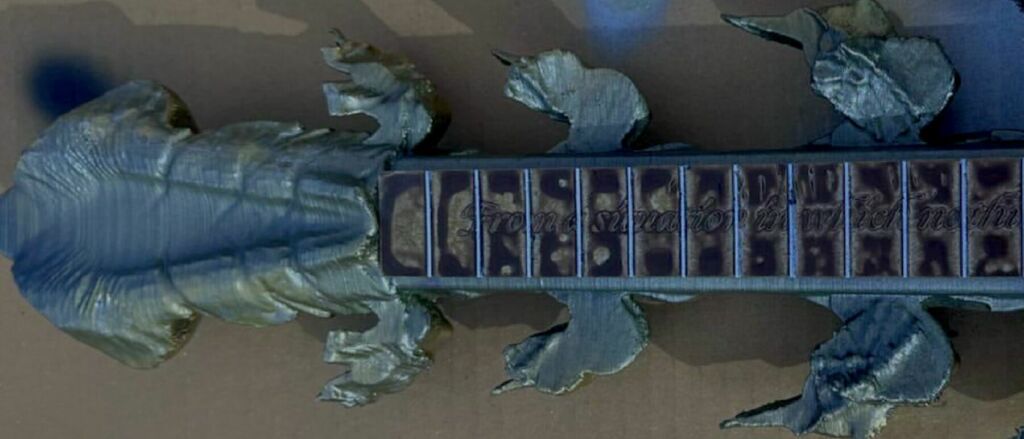
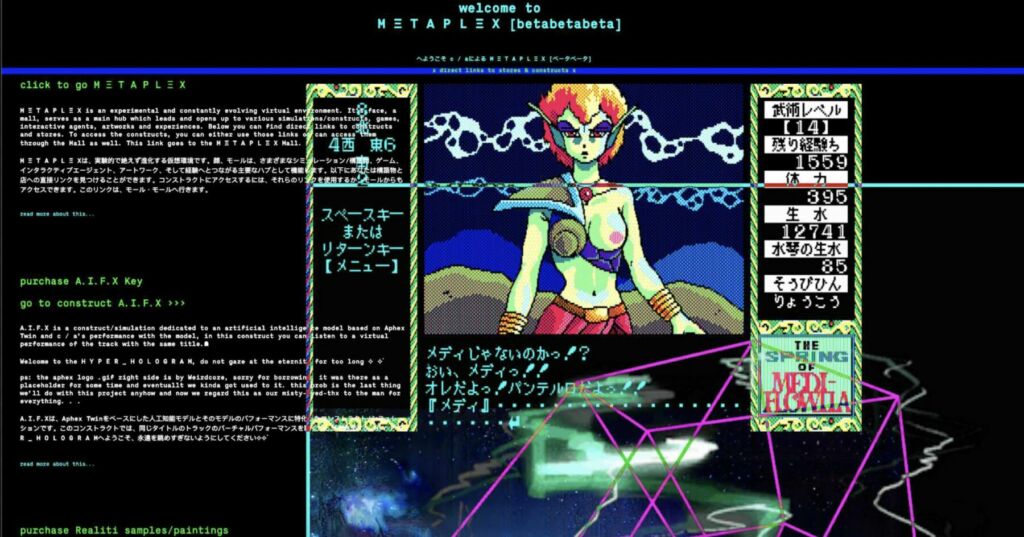
I may owe this particular aspect of the album to the days when I began interacting more intensively with various social and financial structures, particularly within the art world, around 2020. This was the period when my web-based NFT project and creative coding space, M Ξ T A P L Ξ X, featuring a bunch of sub-art projects such as a humorous GAN model trained on Grimes’ video ‘Realiti’ and crypto-keys opening a virtual gig of an AI model trained on Aphex Twin, proved to be somewhat historic. This and several late-nyte software ventures revealed that I could make some money just selling software and living off it. Reflecting on this turning point, I realise it sparked a change in me, and I got myself a nice car [vehicle]. I was like ‘okay, from now on I can live off interest and spend every bloody minute of my life doing whatever I fancy doing’.
One afternoon, the back part of my dear car caught fire amidst the road. I know it sounds almost inhuman to grieve that much over it, but witnessing the car engulfed in flames felt like the end of the world, an intense mix of sorrow with a touch of awe more akin to observing the demise of a particular reality and chapter—a true end of a narration—offering a pivotal moment to shape the album.
Obviously, the reaction was this sense of doom washing over me and a halt to everything. Still, it then led to a series of reflective dialogues, marking it as a significant turning point for me, almost like a leap between alternate realities and soon after, I realised that almost in a cathartic sense, it provided a fertile, generative closure capable of transforming tragedy and decadence into sources of power and subversion. The car became a symbolic monument, a ruin documenting the end and the very first series of work which I regarded as ‘post-reality’, the next layer of ‘post-truth’, a testament to the end of all forms of accelerationism and of transgression along with some stuff we’d be seeing around and had this uncanny feeling against such as LARPing.
We found myself musing over it and took it as a reality check point, joking stupidly like ‘future of all this no longer exists, but perhaps in another reality, instead of this, there was a car crash, Sophie was still with us – with newspapers displaying photos of Princess Diana at a SOPHIE concert –, the white dragon triumphed, and the flag of my adopted country was purple and green. Let’s pretend that’s our truth here <3′. It was kind of akin to the feeling I got around the time of making my previous album.
At the time, most of the people around me and I didn’t have social media accounts, were kinda felt separate from any internet culture, such as Dolores and cores and shit like that – we embraced blatant untruths as our mode of world-building. Ultimately, we named the car ‘REPENTANCE’ and returned it. It is now commemorated in a UE build, showcased at some of my live A/V performances. It’s in a state where we imagined it to be [in contrast to getting some money from insurance and losing the car forever] where the car remains as a graffiti-covered, candle-surrounded relic in a swamp, flanked by stone columns, with EDM [Enharmonic Dank Music] hymns sung by its visitors.
Following the incident, around that time, a single text message –’ It’s blood moon, text me now!’–, moved something in me [I remember gawping at my phone for about 10 seconds, thinking what was so special about it that felt so joyful] and kickstarted the album. Its sense of immediacy and almost naively demanding tone resonated, leading me to christen a track I composed that night and the entire album, with this phrase, put ‘I’m on my way, you stupid pop-star’ on the LP sleeve.
It was the first day I knew I was working on what became EUPHORIA before it was named Euphoria… So I guess, from that point and onwards, it had this touch of connotation to acceleration, techno-capitalism and all, utilising the car as a metaphor. However, it was a subliminal decision at the time, the interwoven recordings of screams filled with euphoria from funfair rides [notably the Waltzer] turned into an allegory for the aforementioned aspects of London and a signifier that even the album itself almost is a ride on it’s own. All conveying and hinting at the album’s central metaphor of a society and a ride cloaked by mechanisms almost keeps you in this simulation. It offers you a sense of artificial joy where it’s better not to look around and stay in that closed, fun-filled circuit.
After I made that track, one funny UE synchronicity meme-ory from last year is that, around then, everything about the album was finished, but I was preparing visuals for a show at FOLD. I modelled a scene in UE5 depicting a Waltzer set in a swamp populated by ‘nullified’ characters. Initially dismissing it as ludicrous, I stepped out for a stroll while it was rendering, only to encounter a real-life embodiment of my digital creation, an experience teeming with surreal euphoria.
Building on the second question concerning the duality and delving deeper into the danker aspects of ‘EUPHORIA’, at this point, I think it’s pretty evident that it goes far beyond mere high-level interpretations of this emotion. Personally, it is rooted in a period replete with enchanting and exclusively positive memories around early 2022. Despite its largely non-autobiographical content, the album doesn’t exclusively portray euphoria as an unblemished or wholly positive emotion but as a multifaceted state, as stated earlier and often accompanied by superficiality.
This breakdown follows it as an extreme, unsustainable state that comes at a cost or, metaphorically speaking, burning fuel. Until now, I’ve seen some people take it essentially as a very ‘dark’ album, and I can see where that’s coming from. Still, I think it’s pretty neutral, definitely not pessimistic as mentioned earlier and even perhaps the heartening and optimistic undertone even in the lead – particularly in alignment with the linguistic aspect, as I alluded earlier.
There surely are hints of transgression, but I don’t conceive it as fully as such alone. Maybe instead, we can say that it is tipping toe on the shadow universe as a form of debt in exchange for being able to paint the full picture whilst remaining neutral. And what appears as cathartic or as an emotional release is, in fact, nothing more than a distant spectator taking notes about a world where traditional structures and narratives are constantly evolving/being reimagined, reflecting the challenges posed by the frenetic pace of technological and societal changes – or collapse.
For instance, connecting this to my thoughts on the regression to the antiquated models such as the mediaeval/fantasy revival and the reactivation of a mystical past or any construct of society we find reinstalled, my musings echo the thematic essence of the series ‘Maniac’ –where AI-facilitated and custom created simulations help individuals confront traumas– proposing enlivening speculation of use cases of technology’s role in society while making a case for applications of LAPRing, exploration of alternative realities, the utilisation of the power of the myth, and fostering creative and meaningful human experiences, and that such simulations could be applied on the societal scale instead of individual and could be for the good.
I acknowledge it’s an era removed from the technological psyche and is the most straightforward remedy with its sharp contrast to modern life, simplicity and authenticity utilised as a construct to heal culture. However, walking hand-in-hand with this phenomenon, especially in the self-enquiry of my utilisation as well, I’ve begun to notice more indications of what might be termed a ‘deranged collective psyche’. Wherever I’d try to see almost a curatorial effort to realise a better ending for this segment or envision what’s next, I’d witness a state increasingly stripped of hope and identity, tales of ‘cyberfolk’ and ‘speculative art’ more religious in nature with their obsession with the idea that we are about to be annihilated, almost yearning for it, a tint of cosmic pessimism and that there is ‘no future’ left – weakly clinging to a version of themselves and of reality marked by the absence of this awareness, the neo-Millenarian conspiracy theories, openly full of hate, eye-candy –essentially pointless– narratives/LARPs, memetic characters – increasingly detached from a grounded, shared reality and instead immersed in a fragmented, chaotic information landscape.
Essentially, haunted by a remote past that does not want to remain in its grave in the grips of a temporal paradox that has resurrected Middle Ages, our present rotting and future replaced by an endless repetition of ghosts of our past. Plus, a meta-aware collective psyche, internet theorist, meme-admins and so on seemed to make it worse, in my opinion – almost making all more susceptible to manipulation, misinformation, tribalism and the erosion of critical thinking, everyone wrapped in a simulation providing a false revelation with a fabulous dream world filled with a kind of euphoria and sense of justification while in reality, the current structures of power and culture production adopt a model almost similar to Apple’s where every year they propose what was new two years ago as new and it works – take for instance, the revival of hardstyle/gabber and its lack of creative evolution. Probably because I grow fuck old now, it feels like the sole purpose of these things is to remind me why I appreciate the things I do, why I love the people that I love and shift my focus to turning all into an ecstatic and life-affirming state, trying to be mindful of my world-ing and our legacy.
In this context, marked by a longing for clarity and stability amidst a tumultuous cultural landscape dominated by RPG/NPC narratives, AI-driven mysticism, TikTok meme-spawns, and nascent internet culture analysis that tends to naively layer hyperrealities to unravel systemic complexities, at least I could see a need for a new purpose until the very end of this reality. Since the time of the virus and perhaps until an international/national conflict or something– truly ending this segment, a call for catharsis, a craving for grounding and understanding, and an undercurrent of resistance became a centric study of the album, so perhaps following the accelerating car analogy, it’s the exhaust of all that you mentioned finding its way in our collective psyche.
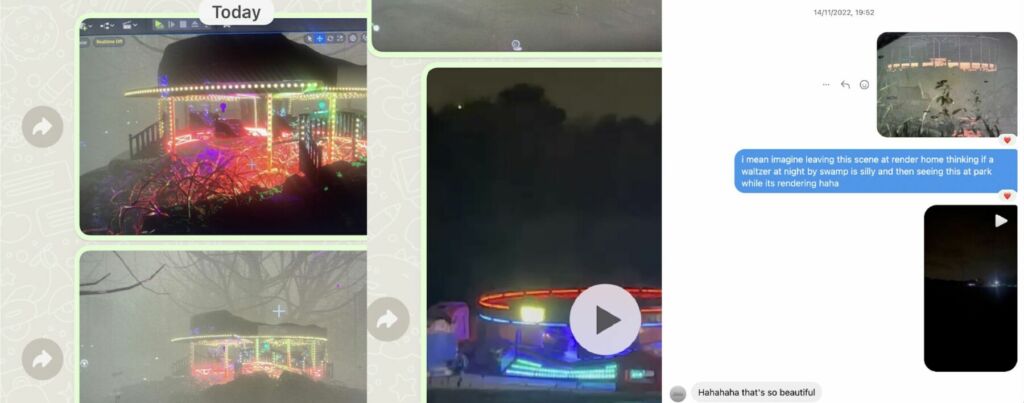
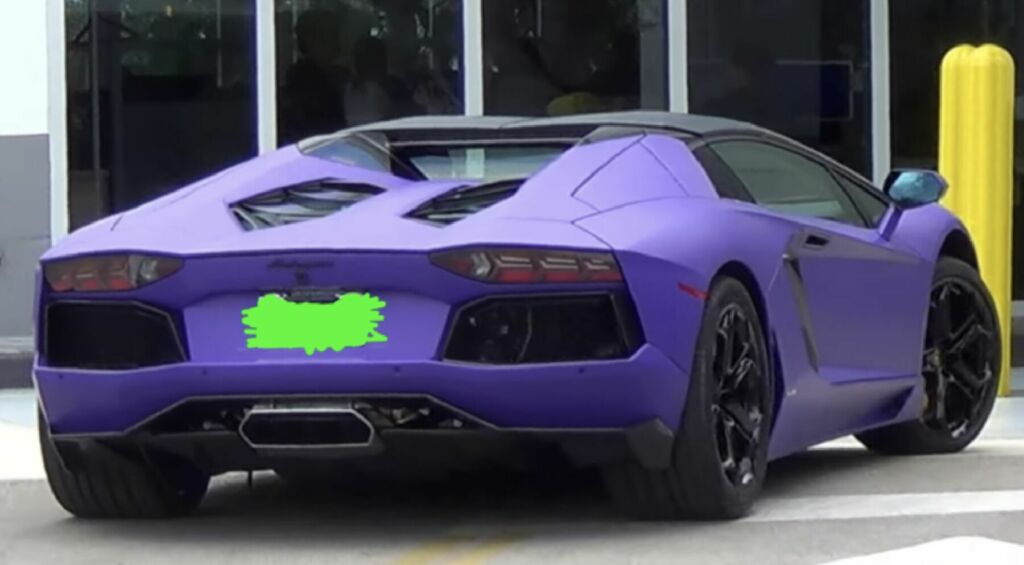
Apart from the more conventional distribution, you created a location-specific listening experience for Euphoria. Accompanied by crypto artworks, special tracks and other extras accessible to those who can find themselves physically within Crystal Palace Park, it adds another set of layers to the ecolagbohrsac2021’s multi-dimensional universe. What is the significance of this specific location, and how did this side of the project develop?
This multimedia branch and layer of EUPHORIA originated from a rather whimsical joke and light-hearted idea of donating a ‘meme-orial’ park bench to Crystal Palace Park. I will expand on this in the dedicated question below, but for now, I can mention that it’s the primary release format for EUPHORIA, marked with a QR code on its plaque opening to the various streaming options of the album.
I always have this deep-rooted inclination towards intertwining my music with distinct places and individuals; even by examining my tracks’ subtitles and sonic elements, it shouldn’t be that hard to trace their connections to specific locales and even the people around me. For EUPHORIA, I first had decided to do the park bench. Still, the main conceptual framework was further shaped and inspired by my fascination with this thing called ‘legend tripping’ – a name bestowed by folklorists and anthropologists on an adolescent practice [containing elements of a rite of passage] in which a usually furtive nocturnal pilgrimage is made to a site which is alleged to have been the scene of some tragic, horrific, and possibly supernatural event or haunting. In my interpretation, however, these sites are associated with moments of euphoria rather than terror [thankfully..].
A few other locations include this spot in SE1 around the William Blake tunnels, initially earmarked for a small after-party [as shown in the photo on the website above] and a spot outside the Sainsbury’s in Crystal Palace where the track ‘guardians…’ was recorded. It overlooks a quaint plant shop and the incident took place when I suddenly recalled a friend once advising me to remove my headphones more often, I did for once when I was there and I discovered a rehearsal studio at the back in a small shed.
A small choir was rehearsing inside, during a sunset creating an unexpectedly euphoric moment – now if you go there for example there is an A4 on the wall with an ecolagbohrsac2021 QR code opening to a recording I made that moment. What I like about these varied listening experiences is that they allowed me to craft multiple versions of EUPHORIA.
While I don’t necessarily see my work overtly emotional, I’d say these are also relatively closer to me. For one particular edition, I revisited a piece I wrote in the spring of 2022 after grabbing and releasing a swan back into the lake while on acid and right after reading about someone called Nina, a park bench –who was known for amusingly disturbing the park’s fishermen by feeding the ducks– and thinking it could be Nina re-incarnated at the park.
So, now there are a bunch of location-specific listening experiences and sonic artefacts scattered around London, each tied to personal memories, notes on memetic constructs and aspects of my work. Primarily accessed through QR codes or ecolagbohrsac2021 markers [the council logo] on walls, in addition to audio material [a couple of months ago, while uploading them all, I noticed almost 600 hours of music there.. ], they often contain cryptic and abstract notes or images that broadly relate to society and culture. Most content is hosted on a .onion service, necessitating a laptop for the complete experience, but not all of them. I think, at this point, my favourite revival of all antiquated practices is the A4 music ads on walls and trees. I just recently saw DIIV did it as well, and I love them so much <3.
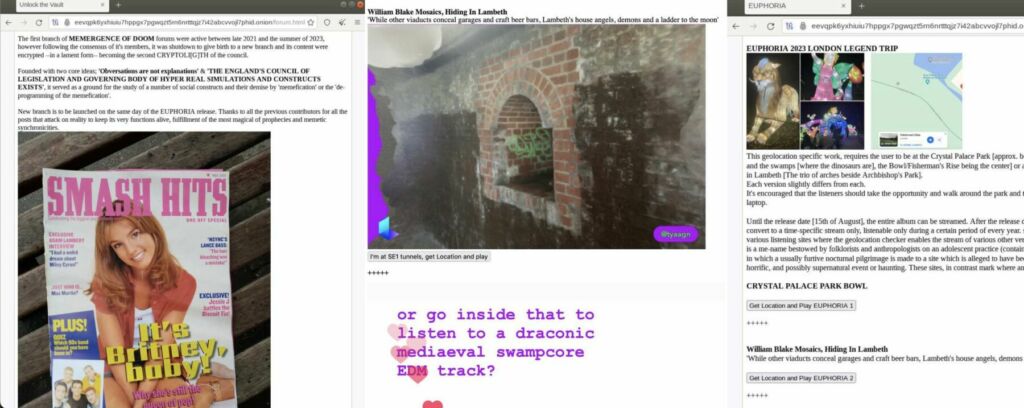
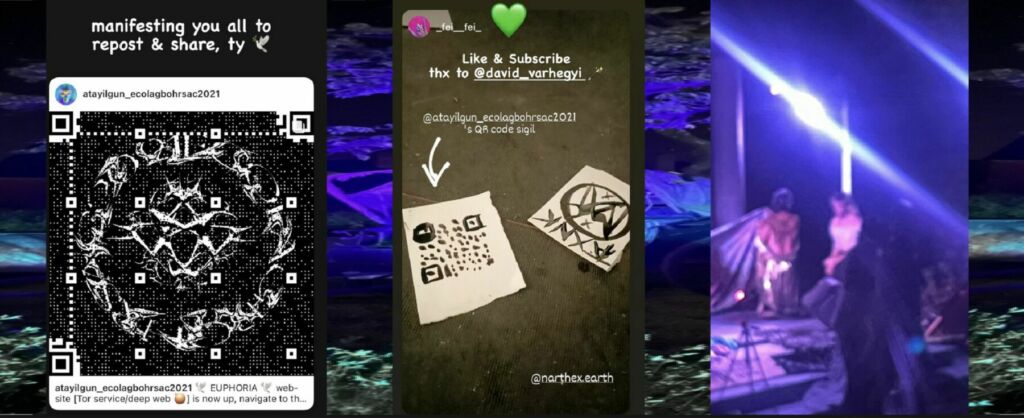
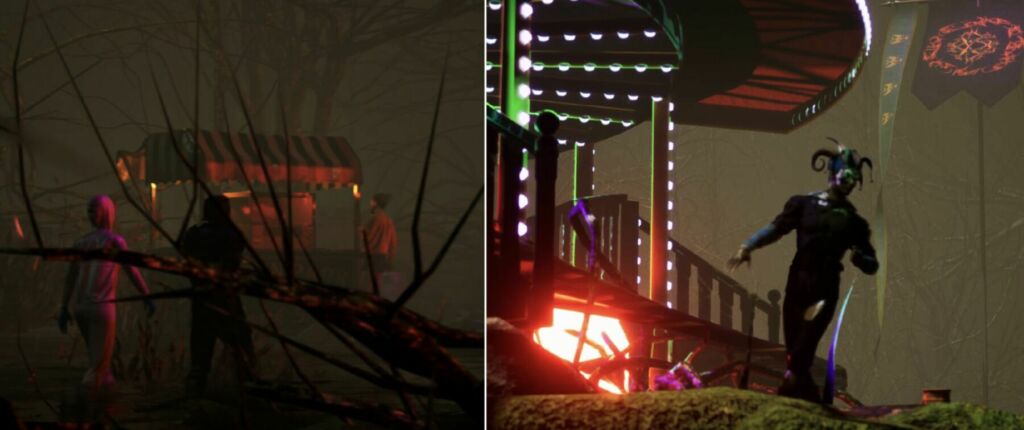
I like them as they remind me of this Japanese horror movie called Kairo, taking the first days of internet subject matter where ghosts are trying to communicate through it, and people start to mark ghosts sighting slowly bleeding into our world with red tapes as a warning not to go in there. In my case, whether it’d be just some notes, screenshots or an actual Unity/UE [Some are these series of online and virtual constructs that exist in a state of flux –either corrupt or shut down– I’ve been working for nearly two years and solely have been posted on MoD forums] build you can navigate in, these websites offer a unique opportunity to engage with both the shadowy and angelic simulations of EUPHORIA.
It is almost like an online legend trip to the haunted corners of the internet, squatted URLs which you can access across damp tunnels and parks of London, both lined to the actual spot and simultaneously an augmented version of it. I find that these bridge the gap between the digital and the physical and serve as a commentary on how these two realms intertwine and influence each other in our daily lives – hopefully for their visitors, creating a unique intersection of physical space and musical narrative.
The significance of Crystal Palace Park to this project is possibly one of the seldom personal angles. During the virus days, it became a sanctuary for me. Now, looking back at it, the way it entered my psyche was that when I first moved to Crystal Palace, even before I could see the park myself, a friend sent this screen capture Google Maps videos and planned a day we would spend there, so even my first relationship with the location was through virtuality and a future never came, a memory of the future – we never could realise our plans, and that’s a challenge to articulate, but going back to those days, and even still. Still, I recall this sort of pushback against my stuff.
During the lockdowns, almost daily, I would visit the park for walks, meet friends, and, most crucially, listen to my own demos. There, amidst the tranquillity of the park, I’d allow my mind to roam freely, envisioning a reality for my music. So, drawn to its lower swampy areas, the sunsets around the pond, the history of bands that have played at the bowl, the occasional funfair at the top, and even the statues adorned with heads made from trash, now, the entire place resonates with the essence of ecolagbohrsac2021 like almost feeling like an open-air exhibition of my work – so I visit there as much as I can and feel like the beauty of the park also plays a role in my connection to it.
At times, I’d get lost to a degree where my work wouldn’t feel like it belonged to this reality anymore, turning every live show or individual enjoying what I do seem like a small miracle. So, not much has changed since then – I cherish this feeling and am infinitely grateful to those who have supported my stuff over the course of a few past years, but I still have remnants of this feeling – these days, even my closest friends tell me my stuff feels like from an alternate timeline, different dimension or something.
This particular album’s connection to Crystal Palace Park was further cemented when I was granted early access to DALL·E 2 through the OpenAI artist programme and my first experiments with it. During this period, I created a series of images that I whimsically described on an NFT marketplace as ‘Fashion shoot of the lunar ‘EUPHORIA’ festival participants, slowly rising from the swamps of Crystal Palace whilst making an offering of their favourite machines before queuing up for the ‘MEMERGENCE OF DOOM Festival’. Created by ecolagbohrsac2021 x DALL·E.’ I guess now blending the physical and the digital, the real and the imagined, is emblematic of my unique relationship with Crystal Palace Park and its influence on my work.
Years ago, we had this idea of donating objects to enter an event going back to one night in Berlin with a friend. We were on a train, idly chatting, and concocted the concept of a club named ‘CLUB SACRIFICE’. The gimmick was that everyone entering would donate an object, which would then be displayed in a vast, ever-growing trash museum. This whimsical notion lingered with me. I applied this concept to this envision of this stupid speculative event and decided to weave these elements into a complex,
multi-layered multimedia reality. As hinted in the artwork description, the story was that rising from the swamps, the festival-goers offered up what would be considered vintage laptops as their ticket to entry to a speculative mediaeval EDM festival set in Crystal Palace Park. It encompassed the festival attendees around The Bowl and the pond, my music playing at the festival, a Shrine for my old Lamborghini amidst the swamps and the ruins of a funfair.
It’s funny because when I did these images, I didn’t acknowledge the memetic connection with the Crystal Palace Bowl [known for its half-open laptop shape] and the offerings, but then it all made more/less sense.

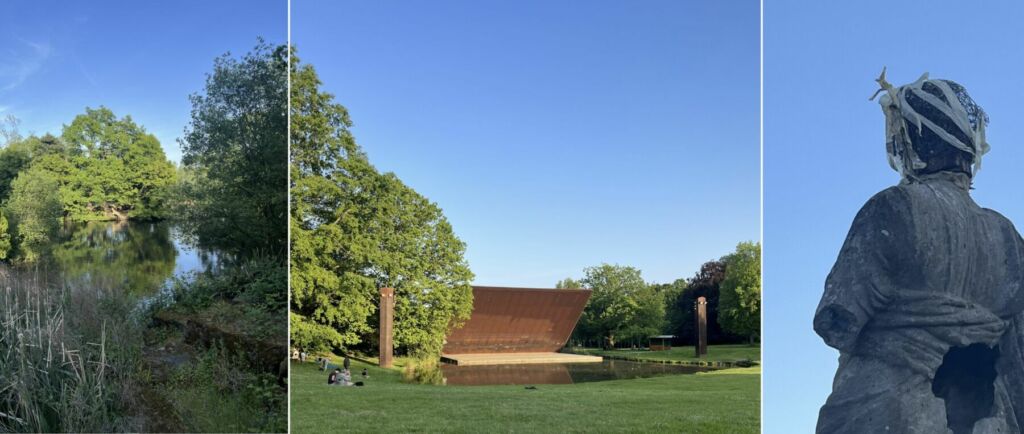
Contrary to the prevalent scepticism, my use of crypto in this project stems not from a desire to capitalise but from the functionality it offers. Token-gating, for example, allows me to manage who accesses these experiences, maintaining their semi-private nature and ensuring a select group enjoys them.
The crypto-art element came about when I was programming the website. I included a map of the park, marking the listener’s location, and offered to send one of the above images as a token of appreciation if they listened to the entire album from start to finish – symbolically transforming the listeners into participants in the digital realm of EUPHORIA.
At one point, I even tried to jump into the sphere of digital fashion too; I saw this idle runway at a venue I was asked to collaborate with; it didn’t work out in the end, but this experience sparked my imagination, leading me to envision how mad it would be if individuals in a park or at a club where I’m performing could embody the entities depicted in my digital art – regardless of the medium utilised, either augmented reality or similar technology or simply by making them physically.
I tried to make them digital collectables that could bring in some money and inject an additional multimedia layer. Yet, the noble quest for a collaborator who shared a similar vision was a bit of a hurdle. I crossed paths with someone excited about bringing these digital designs to life in a physical form but realised I lacked the zest to embark on such an endeavour. So, now I’m somewhat open to exploring digital and physical interpretations of these. I used to love this game called Ultima Online, and it had this crazy sense of fashion [dying robes with daemon blood and stuff like that], which I felt was missing in contemporary digital fashion or, even if not missing, could be of enhancement.
The fashion or wearable element remains the only aspect of ‘EUPHORIA’ I have yet to actualize. But I remain hopeful, trusting that it will come to fruition when the time is right and the stars align perfectly.
Now I wonder if anyone would venture to Crystal Palace Park with a laptop, open Tor, and listen to the album. So far, only a single friend has drawn the connection between the laptops depicted by the festival-goers in the digital art and the physical location of the Crystal Palace Bowl. This recognition, albeit minimal, exceeds my initial expectations. It’s a small yet satisfying affirmation that the project’s layered complexity resonates, at least with some, and isn’t infinitely convoluted. This level of engagement and understanding, however modest and not that I’d care otherwise, brings me a sense of contentment.
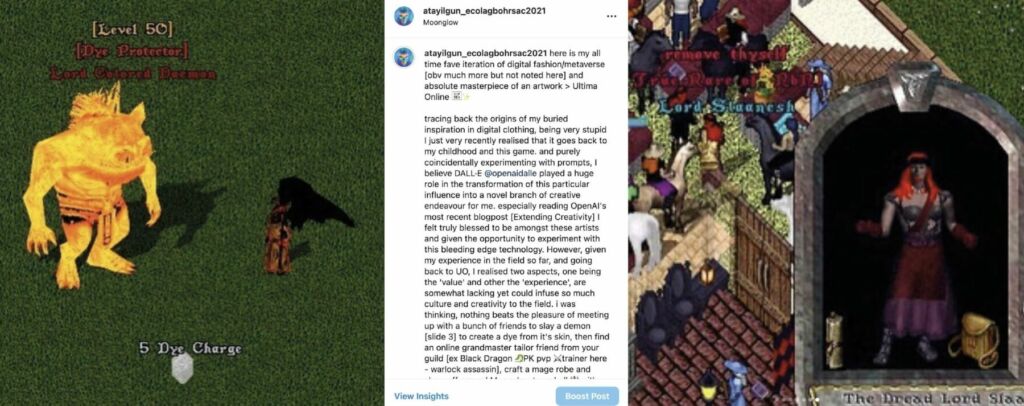

You have successfully applied for and funded a memorial bench in Crystal Palace Park dedicated to the album. As memorial benches are usually addressed to those no longer alive, they commemorate the past yet to come. Was this destabilisation of time relations something you intended?
That’s a particularly apt way of putting it, thank you. The ‘meme-orial’ park bench is dedicated to ‘EUPHORIA, Most Dismal Swamp, IKLECTIK, and all my family and friends’, but it also carries this unique characteristic which I’m quite proud of. Through the text on the plaque, it directly engages passersby with its opening line, ‘hey lovely…’, followed by an invitation to ‘sit down, take off their shoes…’. In its rather playful nature, this approach invites people nearby to pause, offering them a moment of rest and music in return. So, in its perpetual time-zero state, it consistently addresses passersby in their present moment.
The reason why it’s designed as such is that the bench’s primary role is essentially the main release format for the album, as aforementioned. When initially discussing it with friends and being asked about how I’d publish the album, whether as an LP or another format, I’d be like, ‘It’ll be published as a park bench’. As mentioned above, placing a QR code on the bench’s plaque and linking it to the album stream led to the inspiration and development of further work and additional locations for legend/euphoria tripping.
Regarding the destabilisation of time, as most of my work, it indeed does involve a play on temporal asynchrony. It acts almost like a physical embodiment –or as ruins of a ‘Wall of Time’ [Ernst Jünger] as I like to call it– where the past, present, and future are not distinctly separate but interwoven in a rich tapestry of experiences, ruins and memories, where our present is the past of a post-future and my work is almost a seal/end of a particular time-segment, now bridging the two realities/dualities, existing in a new reality as an artefact/remnant of the prior yet that is visible in a plain field of trash and moss, in a future so that it connects.
Concerning my intentions, before the idea of including the QR code and using the bench as the album’s release platform, I can’t say I had any specific aim in mind; it was something I wanted to do for the sake of doing. However, now that it’s completed, I realise it plays a vital role and helps various dualities to make sense. Conversations with friends, including Agata from CLOT <3, have given me new perspectives.
From a personal angle and as part of the work’s dualities, the bench symbolises a retreat from London’s hyperstimulation and complex cybernetic system of machines and monetary flow. It compellingly asks people to ‘stop’ and just be there, offering a raw experience of sitting, possibly with a tea, observing the life around, and hopefully enjoying the music it offers.
This almost stripped-down interaction abstracts all other elements of the album; there are no concepts, there is no text, no visual references, no names, and its essence is experienced only by those observant enough to notice the bench, read the plaque, and decide to listen – either through clear-net links or the full experience, potentially returning another day with a laptop to hear these somewhat stupid musical compositions with additional material via Tor [the .onion link], the plaque is the only interface.
I don’t know, but the image of a park bench on a summer day, with an elderly couple taking a rest on it or groups of people sprawled around it, munching on McDonald’s and listening to TikTok tunes from a shitty Bluetooth speaker late into the night, strikes me as utterly idyllic and romantic. From the distant, ecstatic screams of the funfair to the nocturnal chirping of birds and the sounds of grime emanating from the car park, it all just coalesces into the album’s vivid visual landscape.
It is pretty much the quintessential embodiment of EUPHORIA. Furthermore, living with my computer throughout my upbringing, my nocturnal digital life undoubtedly influences a significant part of EUPHORIA after dark and the work that goes along with it. To bring this to a full circle, I must have had this intrinsic craving to anchor it in the tangible world, and the meme-orial park-bench emerged as the perfect, palpable antithesis to running a deep-web forum or spectacle art – a physical manifestation mirroring my virtual existence and the stuff I put out.
It’s not an online-content competing for your attention amongst algorithms anymore, it just ‘exists’. Imagine what comes to mind when we think of technology: efficient, invisible, fast, optimistic, and constantly updated, but this is physically present, slow, dystopian, obsolete, and governed by chance, striking deep into the heart of value.
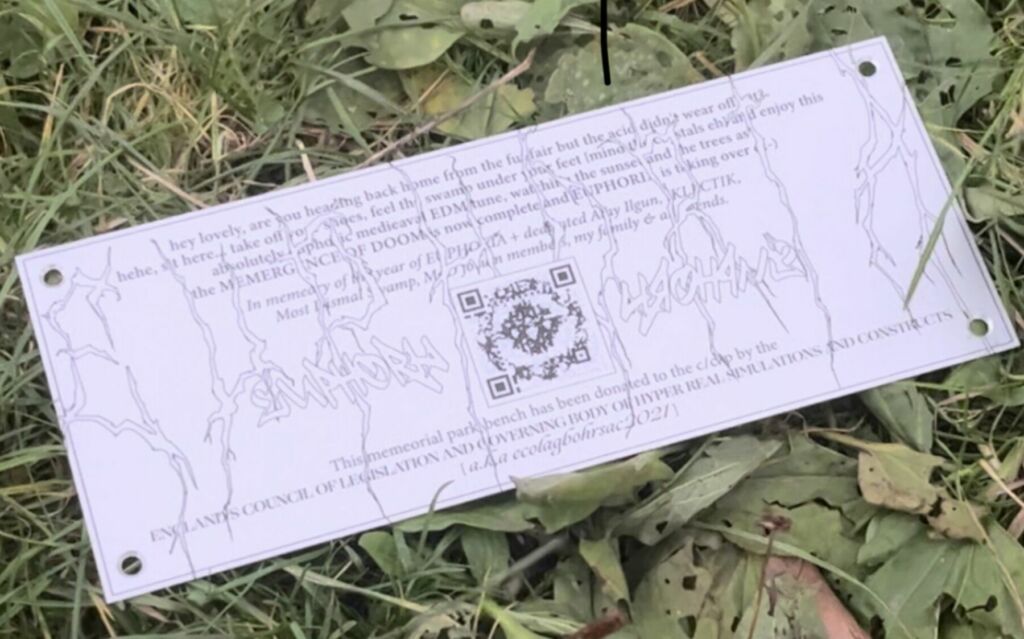
Solitude or loneliness, how do you spend your time alone?
Well, since I can remember, there has been nothing I have enjoyed more than being by myself and making music. I’m very precious with my time, so I probably go out a few times a week to meet some friends or go to a gig, but other than that, I’m probably home. If I’m home, I’m almost 99% engrossed in making music, I had the best sleeps of my life laying my head on my mixer, computer’s glow on my face and waking up to the track I was working on.
As one can figure out from the interview, for the past 5-6 years, I have been involved in a bit of software/web-oriented stuff, installations, and even some visual art. Still, they were mostly done when I was travelling, as a collaboration, or simply because I simply had to get it out of my system real quick.
Sometimes I come across people talking about this social expectancy to produce stuff but not enough of just being able to enjoy and be content with the simplest form of interaction with their medium, such as putting on a 4/4 kick drum and the silliest sequences on top, slowly turning a knob and listening to it. So, I guess whenever I’m alone, I allow myself to enjoy the simplest of things or the output on that particular day. Then, if they turn into something else, it’s a cause for celebration, and even if not, I still relish and love spending pretty much all day doing it.
Now I just want to finish the new stuff and not delay the next release. I mean, after my debut album [THE ONLY WAY WE KNOW TO HAVE FUN] came out in 2021, I finished almost 4-5 more albums almost in a year, and then EUPHORIA was written and conceptualised between early 2022 [I think I even wrote the first 2-3 songs on 1 January in my hometown [Ankara] and summer of 2022. I sent Dane [Most Dismal Swamp] an almost 90% finished album version. Still, the live shows, my other engagements in the music business, and the other multimedia works around it caused almost a year of delay in the release. On the 2nd of December, I put together this event called THE END OF THE YEAR OF EUPHORIA PARTY, played the last EUPHORIA – and now I think this interview is the last thing I’ll ever do about it.
Goodbye, EUPHORIA, and much love to you all.
🗡SPEAR OF LIGHT INTO THE HEART OF HATRED ❤️


